A Practical Guide to Keeping Chickens – All About Chicks!
Oh Lardy! is a participant in the Amazon Services LLC Associates Program, an affiliate advertising program designed to provide a means for us to earn fees by linking to Amazon.com and affiliated sites.
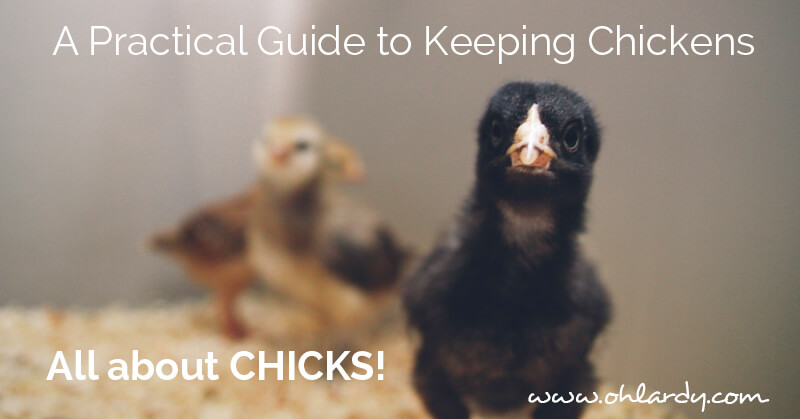
So, you have decided you want chickens! You have done your research, and you know the perfect breeds for your backyard! Either you go to your local feed store (or order them online) to pick them out! But, how many do you get? Hopefully, the size of your backyard and your City Code has given you an idea of a range. It is important to remember that chickens are social creatures! They like friends. Personally, I think at least 3 hens is a good number. They will be able to keep themselves company, without begging for your attention.
Besides the particular breeds you have picked out, how do you go about selecting the chicks you will bring home? Well, you know you want girls! No boys. Boys don't give you eggs, only loud cock-a-doodle-doo-ing! Be sure the chicks you are selecting have been “sexed.” Sexed chicks are those that have had their gender already determined. This means that they are “most likely” girls. I say “most likely” because people do make mistakes and I know several people who have had their sweet little pullet turn into a crowing rooster. If you find that your feed store carries “straight run” chicks, this means that they were scooped up and you have a 50/50 chance of getting a girl or a boy.
When you are picking out your chicks, select the ones that look healthy. I think this goes without saying, but wanted to mention it because you may be so excited you just grab whichever ones you can catch! If the chick looks ill, or not quite right, let the store owner know and pick a different one. Friends, chicks are cute. REAL cute. Don't let their adorable peeping trick you into taking more than you came for. If you only came for 4, just get 4.
You have chicks in your house, now what?
Well, since you are going to be an excellent chicken owner, you most likely have already set up a nice little house for them to hang out in. No, not the coop outside. The Brooder. A brooder is a small place that is free from drafts, and has food, water, and warmth. This can be as simple as a big cardboard box, or even a cage from your local feed store. My first brooder was a big plastic storage bin I got at target. It worked just fine, until they got big enough to perch on the side and poop on my floor. Food for thought.
The Brooder
The brooder ingredients are pretty simple. Once you decide on what kind of container to use, you need to find a place to put it. Choose an area that is free from drafts and safe from other house pets. If your container is a wire cage, be sure the sides can be protected from breezes. I used a wall on two sides, and a cut piece of cardboard on the other. It doesn't have to be pretty, just protected.
Litter
Your baby chicks will also need something to stand on, poop in, and scratch and dig around in. I have heard that some people like to put some type of towel or rags down at first to prevent the chicks from pecking at the litter for the first few days. Plus, it also gives them something soft to fall on when they happen to fall asleep suddenly – like they often do. Keep in mind these rags or towels will need to be replaced frequently to keep the area clean. As far as litter goes, you have some options. My favorite litter is pine shavings. You can also use peat moss! You just need something that is absorbent and soft. Keep this litter clean, fluffy, and dry. Replace wet litter as it can get moldy quickly.
Warmth
Chicks need heat. Their fluffy down just doesn't do the job of keeping them warm. For the purpose of keeping them warm, you will need a lamp of some sort. The easiest thing to do is to clamp or suspend a heat lamp above the cage. Start by keeping the area around 95 F degrees and lower the temp by 5 degrees each week until match room temperature. I was never really concerned about the specific temperature in the brooder. In fact, the first time I had chicks I just used a desk lamp with a red light bulb and that kept them plenty warm. Now I have a heat lamp. The reason I never worried about the specific temperature is because the chicks always told me what they needed. Place the lamp on one side of the brooder and the food on the other side. If the chicks are too cold, they will be all piled on top of each other under the lamp. If they are too hot, they will be on the opposite side of the lamp. If it is just perfect they will move and peep about the brooder happily, and sleep next to each other because they love each other (not because they are freezing). Listen to your chicks! They will peep LOUD and OFTEN if they are too cold or too hot.
Food and Water
Chicks like to drink. They drink and drink and drink. It is cute to watch, too. Place the waterer on the opposite side of the heat lamp so that the water doesn't get too hot and the chicks can escape the heat if they need to. You will most likely need to refresh their water several times a day. They like to poop and scratch and will inevitably poop in their water and scratch all of the litter into it as well. For this reason, I chose a nipple waterer and it was WAY less messy! The one I got looks a lot like this one:
You will also need to get a feeder for your chicks. A good feeder will have holes or some other opening to allow the chicks to eat, but not allow them to get into their food. Like I mentioned before, they will poop, scratch, and sleep wherever they want to. It will also be easy to clean. I got this feeder last time because I could attach a mason jar full of food on top and they couldn't climb on top of it.
As for as what to put in the feeder, your local feed store should carry “Grower” or “Starter” feed. This feed is formulated specifically for growing chicks as it is higher in protein. You may have several options with grower feed. Most grower feed is “mash” or “crumble” which makes sense because their tiny beaks have to be able to pick it up! You can also find organic and non organic feed in most feed stores.
Roosting Practice
Chickens like to roost while they sleep. That is, they like to be up high and perch on something. Unless they are my chickens, then they just sleep in the nest boxes. When your chicks are 3 or 4 weeks old, you can stick a little branch or dowel into the brooder so that they can start practicing. Keep the perch low to the floor so that when they do fall off they don't hurt themselves. They will figure it out eventually. I never raised my practice perch, I always left it low.
Chick Behavior
As I have mentioned before, chicks like to poop, sleep, and scratch. They do it all day, every day. They also peep! They peep all of the time. Peep, peep, peep. Unless they are sleeping. That is the only time they aren't peeping. But, as soon as they wake up, it is back to peeping! They like to explore their brooder and they often chase each other and flap their wings. You may find a chick face down in the litter, wings and legs sprawled out. Don't be alarmed at first. The young chick most likely feel asleep suddenly and is taking a power nap. If you touch her, she will pop back up and get back to peeping. As they start to get older, it is fun to take them outside and let them explore in the grass. Just make sure it is warm enough and they are safe.
Sick Chicks
Your best defense against a sick chick is proper planning and care. I mentioned when selecting chicks to choose one that appears vibrant and healthy. Keep the cage clean and clean the waterer and feeder frequently. Also, watch your chicks! You will get to know their normal behavior and if something seems off, you may have an illness on your hands. A sick chick may stop eating and drinking, may look lethargic, may have watery poop, and will generally look like a sad little chickie. The most common chick illness is pasting. Pasting occurs when poop dries on their butt and completely blocks the vent. Waste will not be able to pass and will back them up. This will cause discomfort and ultimately death if it isn't dealt with. If you notice your chick “pasting up” simply wipe the vent clean with a damp cloth.
When do the chicks move to the coop?
I do have to say, having some tiny, cute, peeping chicks in the kitchen is sweet. They peep, we hold them, we watch them. It's fun! But they get bigger, and stronger, and messier!! And then, when they are big enough, if you have an open brooder they do this:
Yes, that is poop on the floor. Thank you very much cute chicks..er..tiny chickens. The general rule of thumb is that when they have all of their feathers, they can move outside to the coop, probably around three months of age. However, this could be sooner. Just watch your birds to know when they are ready. Make the move to the coop a slow one. They love their brooder, they feel safe there. Don't just throw them into the new coop. I moved the brooder over to the coop area so that they could get used to their new surroundings. After a day or two, I opened the door to their cage and let them explore. They never left. They are total chickens! Ha! Anyway, after a while they would come out to explore and then go back to their cage for the night. Eventually I had to show them their new sleeping area and remove the brooder. The second night they were in the coop, I figured I would have to go find them and put them into the hen house for the night. I didn't. I found them all roosting happily. Just remember to take it slow and gradually introduce them to their new surroundings and they will do just fine!
Get Our E-book!
For everything you need to know about chickens, check out Oh Lardy's Guide to Keeping Backyard Chickens!
Next up: The Scoop on The Coop
And in case you missed it: Chicken 101
Pin it!
This post was a part of: Natural Living Monday

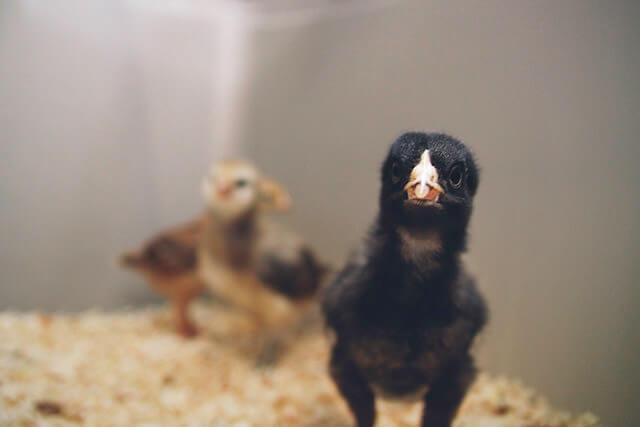
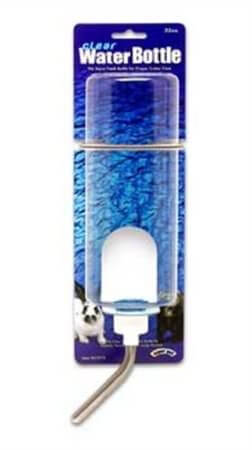
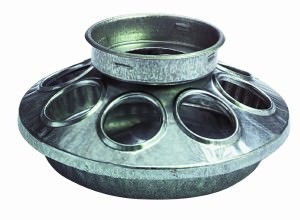
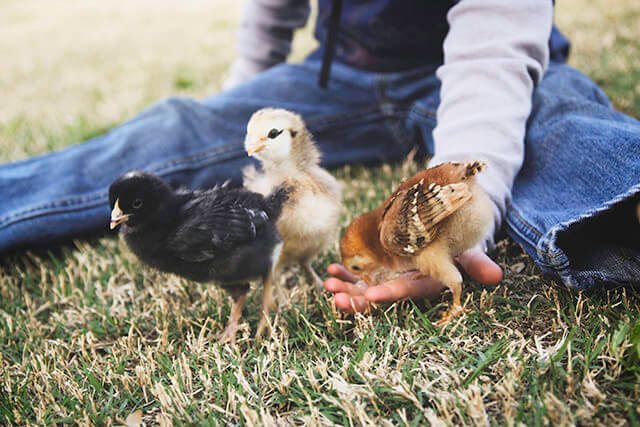
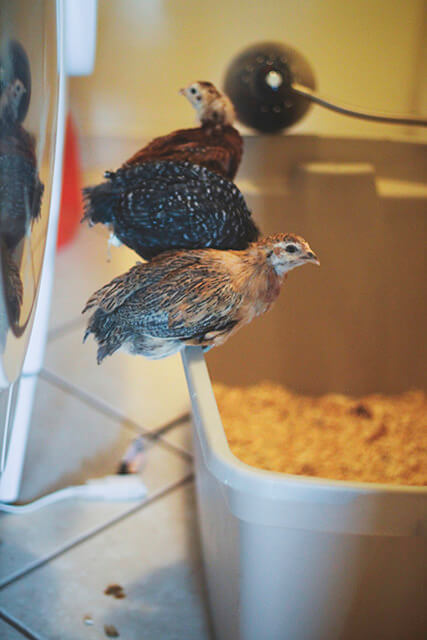

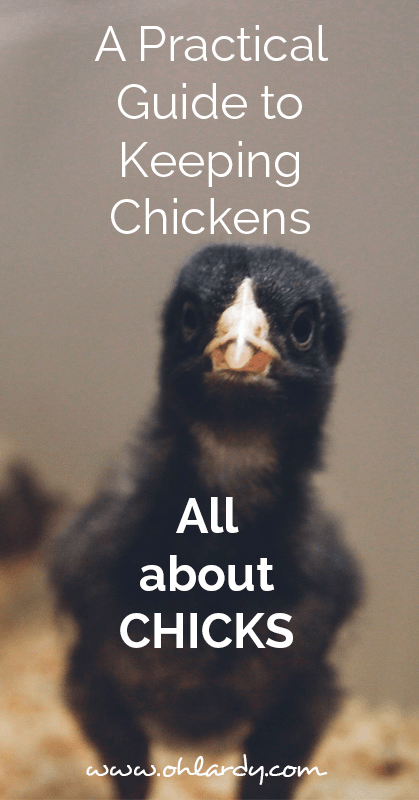
I really appreciate your chicken posts! We live in Queen Creek, not far I believe, and it’s nice to see how people HERE are doing these things. We are building a house on an acre so I’ve been needing to start learning what I’ll need to know eventually. We plan to get a couple goats and lots of chickens 🙂 Your perspective is getting me excited to start researching.
Goats!! That sounds amazing! I tasted a friend’s Nigerian Dwarf Goat milk and it is delicious!!
My friend and I have recently picked up some chicks and have been following your blog posts to help us get started, as we are city girls and know nothing about raising chicks and having chickens. I just wanted to thank you for the information and let you know that your efforts make a difference.
Thanks for the info! I really enjoyed reading this! We just got 6 chicks a week ago! I am so excited about this! We have our coop built and are keeping them in a brooder in our backporch/laundry room! They are very cool to watch and interact with! Your info was very helpful! Thaks again!